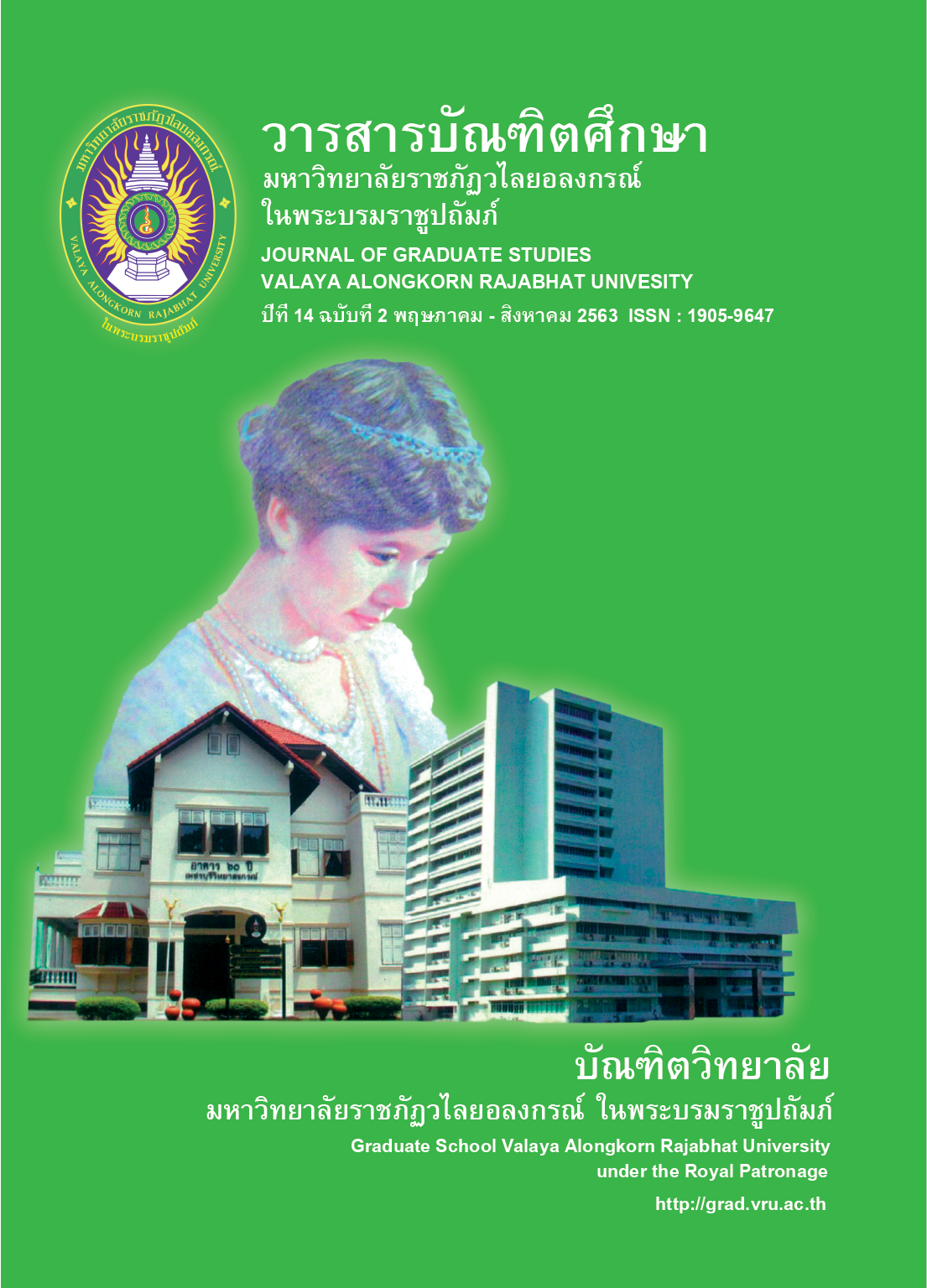THE CREATIVE CONFLICT MANAGEMENT MODEL IN HIGHER EDUCATION INSTITUTIONS
Main Article Content
Abstract
The objectives of this research were to: 1) investigate the creative conflict management model in higher education institutions, and 2) identify the creative conflict management model in higher education institutions. The study was conducted by a mixed methodology research approach. The research process consisted of four steps: 1) analyzing the documents and related literatures concerning the creative conflict management model in higher education institutions, 2) using Delphi technique with group of 25 experts on the creative conflict management model in higher education institutions, 3) sought the advices and feedbacks from nine experts by using connoisseurship technique, and 4) model evaluation the opinions of 425 administrators and personnel. The analysis of the data was accomplished by computation of percentage, mean, standard deviation, median and interquartile range.
The results of research showed that the appropriation of the creative conflict management model in higher education institutions at high level which consisted six factors: 1) organizational centralization, 2) accommodation, 3) meditation, 4) sanction, 5) avoidance, and 6) competition and 32 indicators.
Article Details
บทความทุกเรื่องได้รับการตรวจความถูกต้องทางวิชาการโดยผู้ทรงคุณวุฒิ ทรรศนะและข้อคิดเห็นในบทความวารสารบัณฑิตศึกษา มหาวิทยาลัยราชภัฏวไลยอลงกรณ์ ในพระบรมราชูปถัมภ์ มิใช่เป็นทรรศนะและความคิดของผู้จัดทำจึงมิใช่ความรับผิดชอบของบัณฑิตวิทยาลัย มหาวิทยาลัยราชภัฏวไลยอลงกรณ์ ในพระบรมราชูปถัมภ์ กองบรรณาธิการไม่สงวนสิทธิ์การคัดลอก แต่ให้อ้างอิงแหล่งที่มา
References
Aimwattanakul, S. (2010). kō̜ranī sưksā sāhēt khwāmkhatyǣng nai ʻongkān bō̜rihānsūan tambon nai khēt ʻamphœ̄ dānkhunthot čhangwat Nakhō̜n Rātchasīmā [The Case Study of Causes Conflict in Sub District Administration Organization of Dankuntod, Nakhonratchasema]. Master Thesis of Engineering, Suranaree University of Technology.
Bradford, K. D. and Stringfellow, A. W. (2004). Managing Conflict to Improve the Effectiveness of Retail Networks. Journal of Retailing, 80(15), 1.
Jaisue, S. and Chanetiyoung, D. (2019). rūpbǣp kānbō̜rihān khwāmkhatyǣng tām nǣo khwāmkhit mai nai sathān sưksākhan phư̄nthān [Modern Conflict Management Model in Secondary Education]. Educational Research Journal, Faculty of Education, Srinakarindarawirote University, 14(1), 171-181.
Kotechai, P. (2017). kānbō̜rihān khwāmkhatyǣng [Conflict Management]. Retrieved July 11, 2019, from https://www.gotoknow.org/posts/400064.
Miall, H. R. and Woodhouse, T. (2011). Contemporary Conflict Resolution. Cambridge: Polity Press. 115.
Morris, C. (2004). Managing Conflict in Health Care Settings: Principles, Practices & Policies. Bangkok, Thailand: Prepared for a workshop at King Prajadhikop’s Institute.
Phakamach, P. (2014). phāwa phū nam thāng wichākān yuk mai samrap phūbō̜rihān sathāban ʻudomsưksā nai phāk tawanʻō̜k chīang nư̄a [Modern Academic Leadership of the Higher Education Administrator in North-Eastern Region]. Thai Human Resource Research Journal, Thammasat University. 9(2), (July-December) 2014.
Pleenoi, A. (2012). kānphatthanā kānčhatkān khwāmkhatyǣng nai chumchon dōi chai krabūankān klaiklīa khō̜ phiphāt chumchon dōi ʻāsāsamak klaiklīa phiphāt chumchon kānsưksā [Community Conflict Management Using Dispute Resolution]. Master Thesis of Liberal Arts, Valaya Alongkorn Rajabhat University. 47-48.
Stenner, K. (2005). Conflict Avoidance and Political Participation. Cambridge: Cambridge University Press. 1-3.
Suwannakoot, R. (2012). tūa bong chī kānčhatkān khwāmkhatyǣng samrap phūbō̜rihān samnakngān khēt phư̄nthī kānsưksā [The Factors of Conflict Management for Executive of Education Department]. Doctoral Thesis of Educational Administration, Graduate School, Khon Kaen University.


